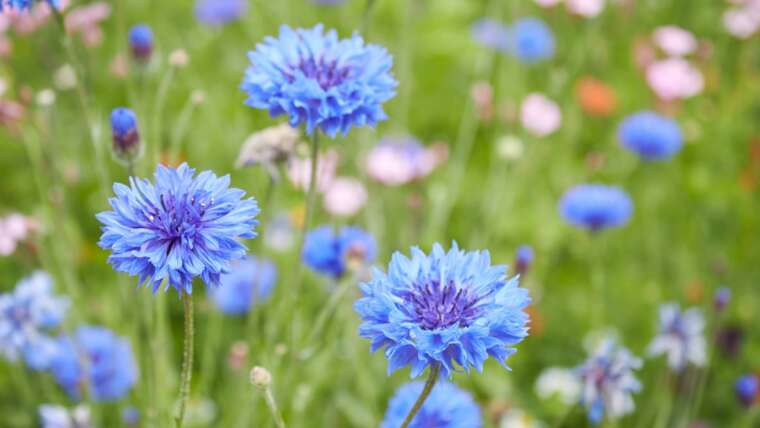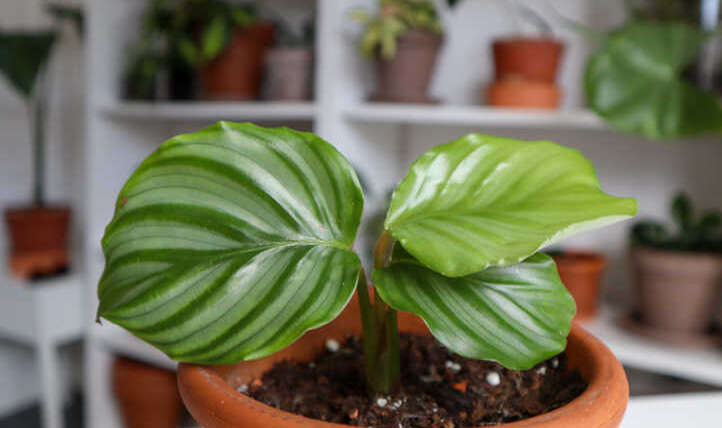Almost every facet of gardening has elements of myth and mystery, and seed-starting is no exception. Whether it’s sterilizing soil, watering daily, or only using seed-starting mixes, there are several ‘rules’ you’ve probably followed without really questioning them.
These are seven of the seedling myths you don’t need to believe when sowing. You can follow them if you like, but they certainly aren’t the only path to success, as many of us are led to believe.
You Can’t Be Rough With Seedlings
Seedlings are resilient and can handle some root disturbance.
Many think of seedlings as incredibly delicate structures to handle with the utmost care and attention to prevent damage. We tend to baby our seedlings (especially when sowing for the first time) in the hopes that this will help them grow better.
But seedlings are actually a lot tougher than you may think. Many don’t mind a little root disturbance and won’t instantly keel over if you accidentally snap off a root. You can even lightly prune roots or tease out some of the feeder roots when transplanting without any negative consequences.
For some seedlings, like lettuce and onions, splitting the roots as you pull them out of the tray will give you even more plants to spread out in the garden. You can plant them as clumps, but you also don’t have to worry about root disturbance and loss if you do want to split them. If you worry about disturbing delicate seedling roots, try these seed-starting trays, which have a large bottom opening, allowing you to gently push the seedling up and out of the tray with your finger.
You Need Seed-Starting Mix
 Choose a soil mix that encourages germination and root growth.
Choose a soil mix that encourages germination and root growth.
Soil choice has a huge impact on how your seeds germinate and develop roots. There should be enough moisture to encourage germination, little resistance to root growth (in other words, no big chunks), and good drainage to prevent waterlogging.
To meet these needs, most gardeners use seed-starting mix. These mixes are typically peat-based with some amendments like perlite mixed in, creating a fine mixture that drains well. It also doesn’t generally contain other components like organic matter or fertilizers, just the right consistency to hold moisture and encourage germination.
However, you don’t have to use a seed-starting mix to sow successfully. If you have a regular potting mix lying around and don’t want to purchase a new mix or can’t find any in your area, you can still use that to fill your trays, albeit with some adjustments.
Potting mixes often have large chunks of material that don’t hold much moisture and hinder early root growth. To get around this problem, simply sift your potting mix to remove the chunks and create a finer texture. After sifting, you can use your potting mix as you would a seed-starting mix without any soil-related germination issues.
Seedlings Don’t Need Fertilizer
 Some seedlings benefit from diluted fertilizer after germination for growth.
Some seedlings benefit from diluted fertilizer after germination for growth.
Many gardeners believe seedlings don’t need fertilizer, as everything they need to sprout is already contained within the seed, and adding fertilizer to the soil can burn the leaves.
This seedling myth does have some truth to it. Synthetic fertilizers, often used in the past and less often today, have high concentrations of readily available nitrogen, which can ‘burn’ the leaves of young seedlings in excess amounts. But using the right fertilizers and applying them carefully limits this risk and will actually boost growth in your young plants.
Look for a fertilizer with low NPK values (nitrogen, phosphorus, and potassium) and dilute the mixture to create a lower strength dose. You can start feeding around two weeks after germination, ensuring the plants are at their strongest when you’re ready to transplant.
You certainly don’t have to feed your seedlings if you don’t want to, but don’t be afraid of feeding either. An extra nutrient boost can give short-season crops a stronger start or container plants better chances of strong establishment after transplanting.
Seedlings Should Be Watered Everyday
 Adjust watering frequency based on soil moisture.
Adjust watering frequency based on soil moisture.
Incorrect watering is one of the most common causes of early death in seedlings. Yellowing or wilting are usually signs of overwatering, which, although done with love, will kill off your seedlings before you get a chance to transplant.
This mistake is caused by the seedling myth that they should be watered every day. We craft meticulous schedules and water regularly to ensure the soil never dries out, but unfortunately, this ends up doing more harm than good.
How often you need to water will depend on the environmental conditions your seedlings are in and their stage of growth.
On sunny days in warm areas, the roots will absorb more water, and the soil will dry out much quicker, requiring water more often than on cool or overcast days. Seedlings that have just germinated won’t need water as often as seedlings a few inches tall, as they have fewer roots and draw up less moisture.
The easiest way to determine the right time to water is to pick up the tray and feel its weight. If the top layer of soil is still moist and the tray is heavy, you don’t need to water. If the top layer of soil is dry and the tray is a little lighter, you can water it again.
Plant One Seed Per Hole
 Increase germination rates by sowing multiple seeds per hole.
Increase germination rates by sowing multiple seeds per hole.
When you’re sowing seeds in trays, it’s easy to pop one seed in each cell and call it a day. But if you’ve noticed spotty germination after sowing, planting only one seed per hole could be the cause.
It all comes down to germination rates. Crops have different germination rates, usually around 90%, but potentially lower for smaller or more abundant seed types. Even with the optimal 90% germination rate, one out of every ten seeds you plant won’t germinate – potentially less.
Sowing two or three seeds per hole mathematically increases your germination chances and gives you the strongest possible plants after thinning. Some plants are also easier to sow this way to save space, like shallots or beets.
Rather than saving your extra seeds and potentially not using them, boost your germination by planting a few seeds in one hole.
You Can’t Sow Root Crops In Trays
 Sow root crops in trays and transplant carefully to avoid taproot damage.
Sow root crops in trays and transplant carefully to avoid taproot damage.
If you look at the instructions for sowing root crops like radishes or beets, you’ll see that direct sowing is recommended over sowing in trays. That’s because these plants have long taproots that grow deep into the soil and don’t like to be disturbed. Plants with branching root systems can take some damage because the roots will continue to grow, but plants with a damaged taproot will struggle.
But that doesn’t mean you can’t sow them in trays at all; it just means that you need to be a little more careful when transplanting. Moving them from trays into the ground as soon as possible and avoiding root disturbance while transplanting will prevent taproot damage, ensuring your seedling grows normally after planting.
This is especially helpful for gardeners in cooler regions that need as much of a headstart on the growing season as possible. Don’t shy away from sowing in trays indoors or in a greenhouse. All you need to do is take a little extra care when handling.
Soil Should Be Sterile
 Mixing worm castings or compost into seed-starting mixes promotes plant resilience.
Mixing worm castings or compost into seed-starting mixes promotes plant resilience.
To avoid fungal diseases and other pathogens from attacking seedlings, you may have tried sterilizing your soil and other seed-starting materials before sowing. Between purchasing bags of sterilized soil or popping potting mix in the microwave, there are many ways gardeners attempt to remove risk from the sowing process.
However, this ignores the conditions your seedlings will be moved to in just a few weeks after sowing. Our gardens are not sterile environments – far from it. We want plenty of activity and life in the soil and above the soil to promote plant health.
To make this transition outdoors a little easier and to develop more resilient plants, try sowing your seedlings in a mix that already has some life in it. Mix worm castings or compost into your seed-starting mixes to give any potential pathogens more things to compete with and more closely match the conditions they will experience after transplanting.
Final Thoughts
Many so-called ‘rules’ to seed-starting don’t always have to be followed for seedling success. Seedlings are more adaptable than we assume, so tailor your sowing process to what’s easiest for you.




